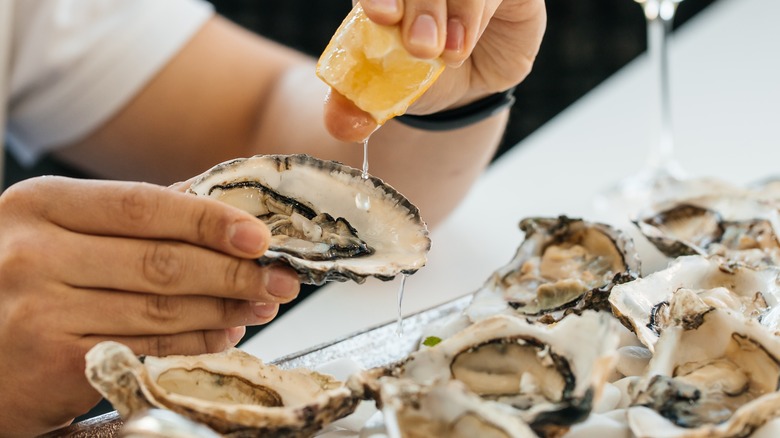The Warning Sign Oysters Have Gone Bad, According To Richard Blais - Exclusive
If you've never smelt rotten shellfish, count yourself extraordinarily lucky. Truly bad oysters, clams, and mussels will offend your nostrils faster than the Flash can run. Celebrity chef Richard Blais was at a loss for words when describing a bad oyster odor during an exclusive interview with Tasting Table. The "Next Level Chef" host told us, "You'll know that it's not a kitchen smell, but — I mean this — you're not like, 'Oh, is that bad?' You just 100% will know."
Beyond indescribably repugnant smells, there is a subtler sign an oyster or any one of its shellfish cousins is dangerously inedible. As with fish, a lack of moisture is a giant red flag for bivalves. Blais told us, "Seafood is from the water, so it should be slick and shimmery. If you opened up an oyster, clam, or mussel and it was dry inside the shell ... or the flesh of the meat was dry — that's no good."
But there's another clue to a bad bivalve, which you can inspect for at the time of purchase.
An open oyster shell is also a no-go
Just as the flesh of shellfish should always be moist, its shell should always be closed prior to cooking or shucking. Before you smell it — and well before you examine it for moisture — an open shell is THE tipoff for a bum oyster. "That means that the oyster itself is dead," Blais shared with us. Ergo, you shouldn't eat them; just tell your guests you'll serve up Oysters Rockefeller next time.
It turns out that clams can often be the exception to this rule. The celebrity chef told us clamshells might be slightly open when shopping for them at a market, and that doesn't mean you have to give up your dinner dreams of linguini and clams. The chef advised tapping them, either with a paring knife or the tip of your finger, after which, "they should clamp shut ... and if they don't shut, they're dead, and you shouldn't eat them."

